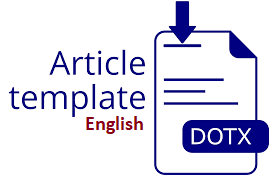Segmentasi Citra MRI dengan Menggunakan Metode BLOB
DOI:
https://doi.org/10.30865/resolusi.v1i2.65Keywords:
Segmentation; Image; BLOB DetectionAbstract
Image processing is a process to produce images according to your wishes or the quality is better. The input is an image and the output is also an image but with better quality than the input image. Digital image processing is a process that aims to manipulate and analyze images with the help of computers. This is done to obtain alternative solutions to a problem with more efficient results and good accuracy, for example for the detection of osteoporosis from X-ray images and for video compression. Image (image) is another term for images as a form of visual information that plays an important role in the multimedia component. Along with technological developments in the field of computerization, image processing technology has been widely used in various fields including medicine and the entertainment industry. The segmentation process in a digital image that separates an object from the background or background is obtained from the RGB value in each pixel in the digital image so that the object can be processed for other purposes. Along with the development of technology in applications that process digital images, the segmentation process becomes increasingly necessary. The results of the segmentation must also be more accurate because if the results of the segmentation are inaccurate it will affect the results of the next process. In general, the segmentation process is divided into three parts based on classification, by edge and by area.
Downloads
References
Nurhuda, Choirul, 2017, “Metode Color Blob Detection Untuk Deteksi Kematangan Tomat Secara Otomatis Berbasis Android”, Jurnal Departemen Teknik Elektro dan Teknologi Informasi, ISSN : 2085-6350,
Hermawati, Fajar Astuti. 2013. “Pengolahan Citra Digital Konsep dan Teori”. Penerbit Andi, Yogyakarta.
Syafii, Slamet Imam, dkk, 2015, “Segmentasi Obyek Pada Citra Digital Menggunakan Metode Otsu Thresholding”, Jurnal Informatika, Vol. 13, No.1, ISSN : 1411-0105.
Kadir, Abdul dan Adhi Susanto. 2013. “Teori dan Aplikasi pengolahan citra”. Penerbit Andi, Yogyakarta.
http:// informatika.web.id/segmentasi-deteksi-warna.html,diakses tanggal 7 Mei 2018
http:// informatika.web.id/pengertian-citra-digital.html,diakses tanggal 7 Mei 2018
http:// informatika.web.id/pengertian-citra-digital.html,diakses tanggal 7 Mei 2018
Wijaya, Marvin ch.2007. “Pengolahan Citra Digital Matlab”, Penerbit Andi, Yogyakarta.
http://id.wikipedia.org/wiki/Pengolahan_citra, diakses tanggal 13 Juli 2018.
http// id. Pegolahan citra.org/wiki/citra,diakses tanggal 13 Juli 2018.
https://pamujiandri.wordpress.com/2011/07/25/makalah-mri, diakses tangga 13 Juli 2018.
Nugroho, Adi. 2010, “Rekayasa Perangkat Lunak Menggunakan UML dan Java”, Penerbit Andi, Yogyakarta.
A.S. Rosa dan Shalahuddin. M, 2013, “Rekayasa Perangkat Lunak Terstruktur”, Andi, Yogyakarta.
Aditya, Arif Primananda, 2013, “Dasar-Dasar Pemrograman Database Dekstop Dengan Visual Basic.Net 2008”, PT. Elex Media Komputindo, Jakarta
Bila bermanfaat silahkan share artikel ini
Berikan Komentar Anda terhadap artikel Segmentasi Citra MRI dengan Menggunakan Metode BLOB
ARTICLE HISTORY
Issue
Section
Authors who publish with this journal agree to the following terms:
- Authors retain copyright and grant the journal right of first publication with the work simultaneously licensed under Creative Commons Attribution 4.0 International License that allows others to share the work with an acknowledgment of the work's authorship and initial publication in this journal.
- Authors are able to enter into separate, additional contractual arrangements for the non-exclusive distribution of the journal's published version of the work (e.g., post it to an institutional repository or publish it in a book), with an acknowledgment of its initial publication in this journal.
- Authors are permitted and encouraged to post their work online (e.g., in institutional repositories or on their website) prior to and during the submission process, as it can lead to productive exchanges, as well as earlier and greater citation of published work (Refer to The Effect of Open Access).















